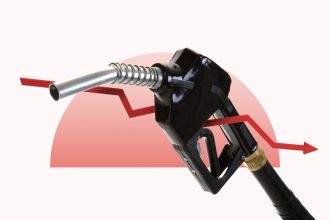Key takeaways
- High-yield savings accounts currently offer rates over 4 percent APY, helping your money keep pace with inflation.
- Certificates of deposit (CDs) provide guaranteed returns with rates reaching over 4 percent APY from terms of six months to five years.
- The current inflation rate sits at approximately 2.4% as of June 2025, down from recent highs but still eroding purchasing power for low-yield accounts.
-
Moving from a 0.01 percent savings account to a 4.50 percent high-yield account on $10,000 saves you approximately $449 annually in lost purchasing power.
According to a 2025 Bankrate survey, 17 percent of savers aren’t earning any interest at all on their savings accounts, and another 17 percent were getting an interest rate of less than 1 percent. With inflation continuing to erode the value of money over time, letting your savings sit in low-yield accounts means you’re essentially losing money.
The good news? Today’s high-yield savings accounts and CDs are offering rates that can help your money keep up with — and even beat — current inflation levels.
Ways to increase buying power and keep up with inflation
While inflation has cooled from its 2022 peaks, it’s still important to ensure your money is working hard enough to maintain its purchasing power. The current inflation rate sits at approximately 2.4 percent, while the national savings average yield remains at 0.6, according to Bankrate’s weekly survey of bank accounts.
If your money is earning less than the inflation rate, you’re losing purchasing power. Here are the most effective ways to protect and grow your money’s value.
Store money in a high-yield savings account
High-yield savings accounts are one of the safest ways to beat inflation while keeping your money easily accessible. These accounts currently offer rates around 4 percent APY — significantly higher than the current inflation rate.
Benefits of high-yield savings accounts:
- FDIC-insured up to $250,000 per depositor, per bank
- Easy access to your money when needed
- No risk of principal loss
- Rates that typically move with Federal Reserve changes
The key is shopping around. Many top high-yield savings accounts have increased their rates alongside Fed rate hikes. Moving your emergency fund or short-term savings to a high-yield account can make a meaningful difference in preserving your purchasing power.
Compare today’s best high-yield savings accounts →
Put money into a high-yield CD
Certificates of deposit offer another safe way to lock in returns that beat inflation, especially if you have money you won’t need for a specific period.
Current CD rates hover around 4 percent APY depending on the term, with the best rates typically found on 6-month to 18-month CDs. Unlike savings accounts, CDs guarantee your rate for the entire term, protecting you from potential rate decreases.
When CDs make sense:
- You have money for a specific future goal (down payment, vacation, etc.)
- You want to lock in today’s high rates
- You don’t need immediate access to the funds
Money tip:
Consider CD laddering, where you divide your money among multiple CDs with different maturity dates. This gives you regular access to portions of your money while maintaining higher rates.
Find the best CD rates for 2025 →
Invest in stocks
For money you won’t need for several years, investing in stocks has historically provided returns that significantly outpace inflation. The S&P 500 has averaged about 10% annual returns over the long term, though with much more volatility than savings accounts or CDs.
What to consider:
- Risk tolerance: Stock values can decline, and you could lose money
- Time horizon: Generally recommended for money you won’t need for at least 5-7 years
- Diversification: Consider broad market index funds rather than individual stocks
If you already have an emergency fund and enough cash in savings, investing some money can potentially provide higher returns to stay ahead of inflation. However, only invest money you can afford to potentially lose.
Learn about opening a brokerage account →
How does inflation affect savings?
The only return that matters is what you earn after inflation. If you’re not keeping up with inflation, you’re slowly destroying your wealth over time.
When people see a monthly interest credit on their statement, they might think they’re “earning” money. But if that account yields 0.01% APY while inflation runs at 2.4%, the result is actually a negative real return.
Think of it this way: Inflation acts like an invisible tax on your money. While you might not see this loss show up on your bank statement like a brokerage account decline, inflation’s impact accumulates over time.
Real-world example:
- Your savings account: $10,000 earning 0.01% APY = $1 in annual interest
- Inflation at 2.4%: Your money loses $240 in purchasing power annually
- Net loss: $239 per year in real purchasing power
This is why it’s crucial to be strategic about where you keep your money, especially larger balances.
Expert tip: Focus on real returns
“People often obsess over credit card rewards that might save them $200 a year, but they’ll keep $50,000 sitting at 0.25% APY. You have to look at every detail, because the opportunity cost of low-yield accounts can dwarf other financial optimizations.”
— Mark Meredith, Certified Financial Planner
If you’re in a low-yielding account, here’s how much inflation is costing you
Many people are comfortable keeping money in low-yield accounts, but seeing the real cost might motivate action. Here’s how inflation impacts different account balances:
Annual purchasing power loss by account balance (assuming 2.4 percent inflation vs. 0.01 percent APY):
| Account balance | Annual interest earned | Purchasing power lost to inflation | Net annual loss |
|---|---|---|---|
| $1,000 | $0.10 | $24 | $23.90 |
| $5,000 | $0.50 | $120 | $119.50 |
| $10,000 | $1.00 | $240 | $239.00 |
| $25,000 | $2.50 | $600 | $597.50 |
| $50,000 | $5.00 | $1,200 | $1,195.00 |
Calculate your potential earnings with our savings calculator →
Bottom line
Protecting your money’s purchasing power doesn’t require a complex strategy or high-risk investment. Moving your savings to a high-yield account or CD can often be done online and immediately puts your money to work beating inflation.
The key actions to take:
- Move emergency funds to high-yield savings for liquidity with better returns
- Consider CDs for money with specific timelines to lock in guaranteed rates
- Invest long-term money in diversified portfolios for growth potential
- Review your accounts annually to ensure you’re getting competitive rates
You don’t need to constantly monitor inflation rates, but being aware of both your account yields and current inflation helps you maintain your wealth over time. The longer you wait, the more purchasing power you’ll lose to inflation’s invisible tax.
Ready to start earning more on your savings?
Compare high-yield savings accounts →
View today’s best CD rates →
Why we ask for feedback
Your feedback helps us improve our content and services. It takes less than a minute to
complete.
Your responses are anonymous and will only be used for improving our website.
Help us improve our content
Read the full article here
















